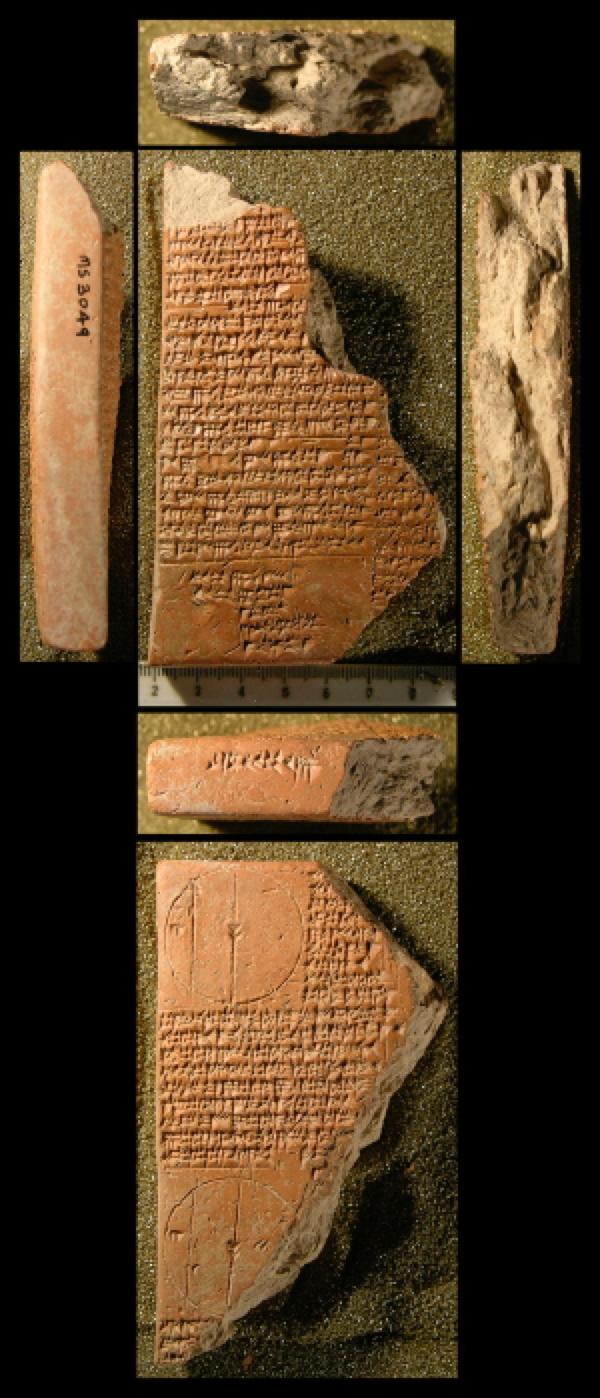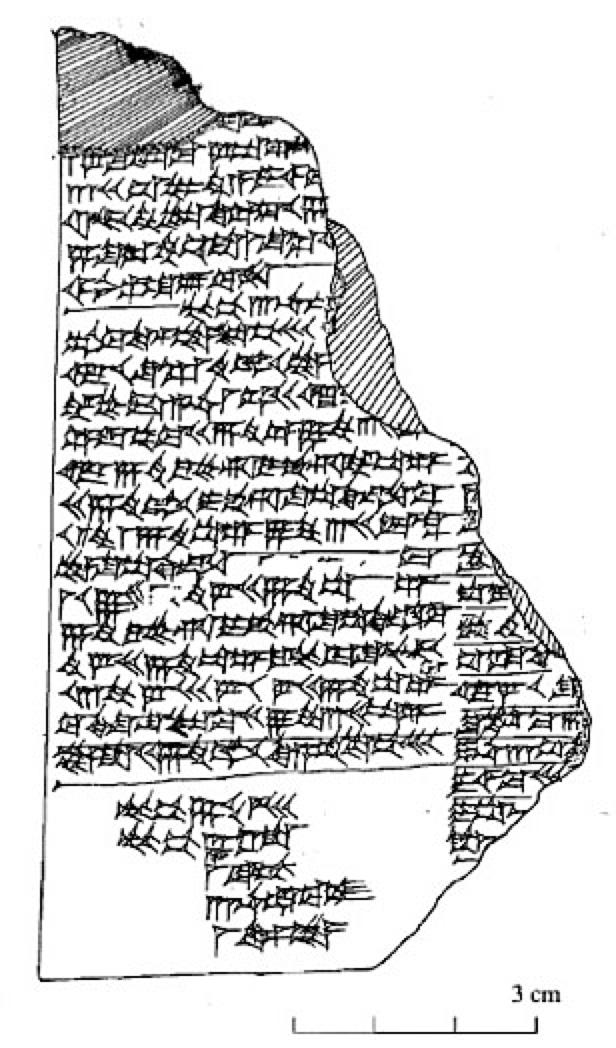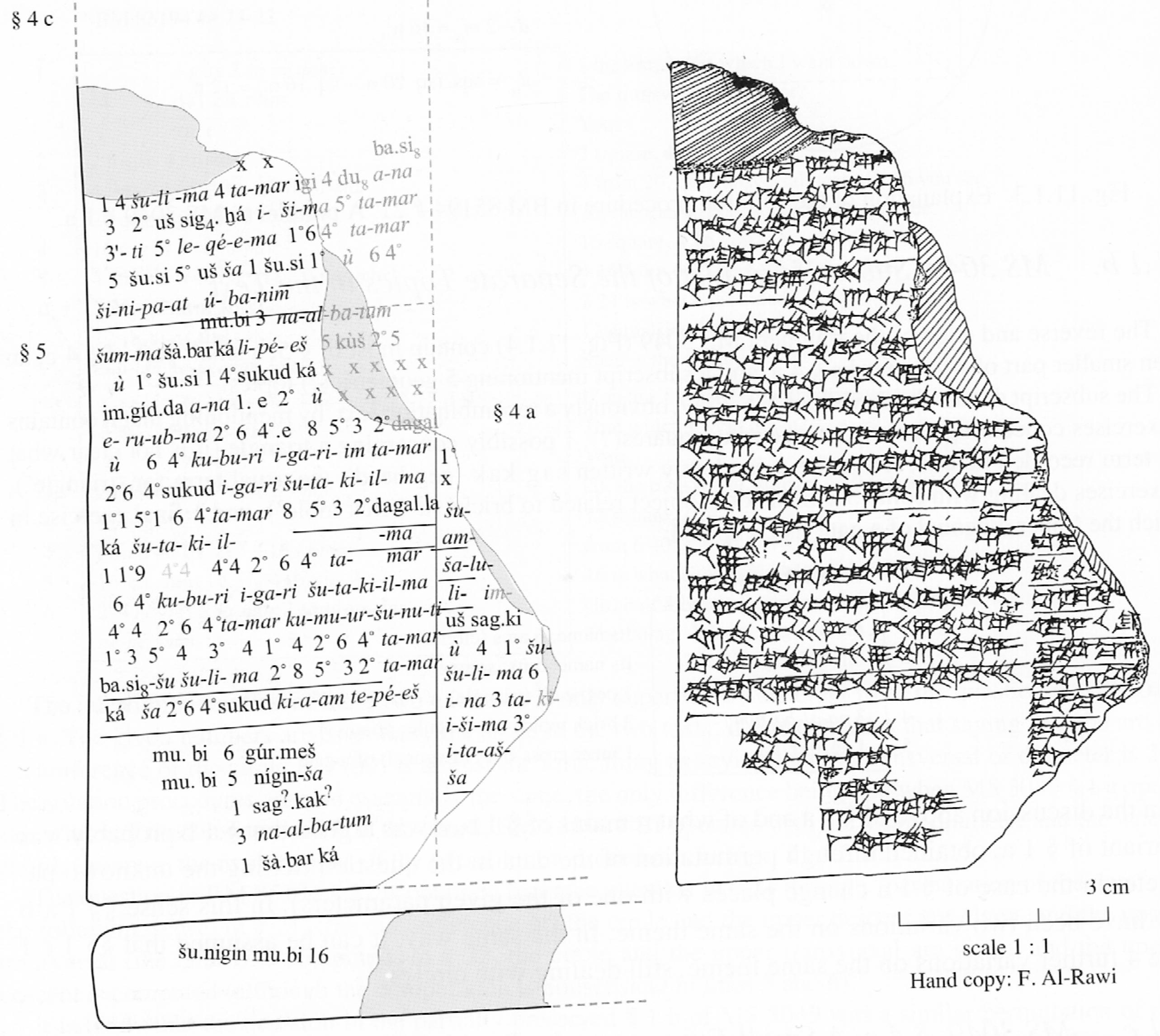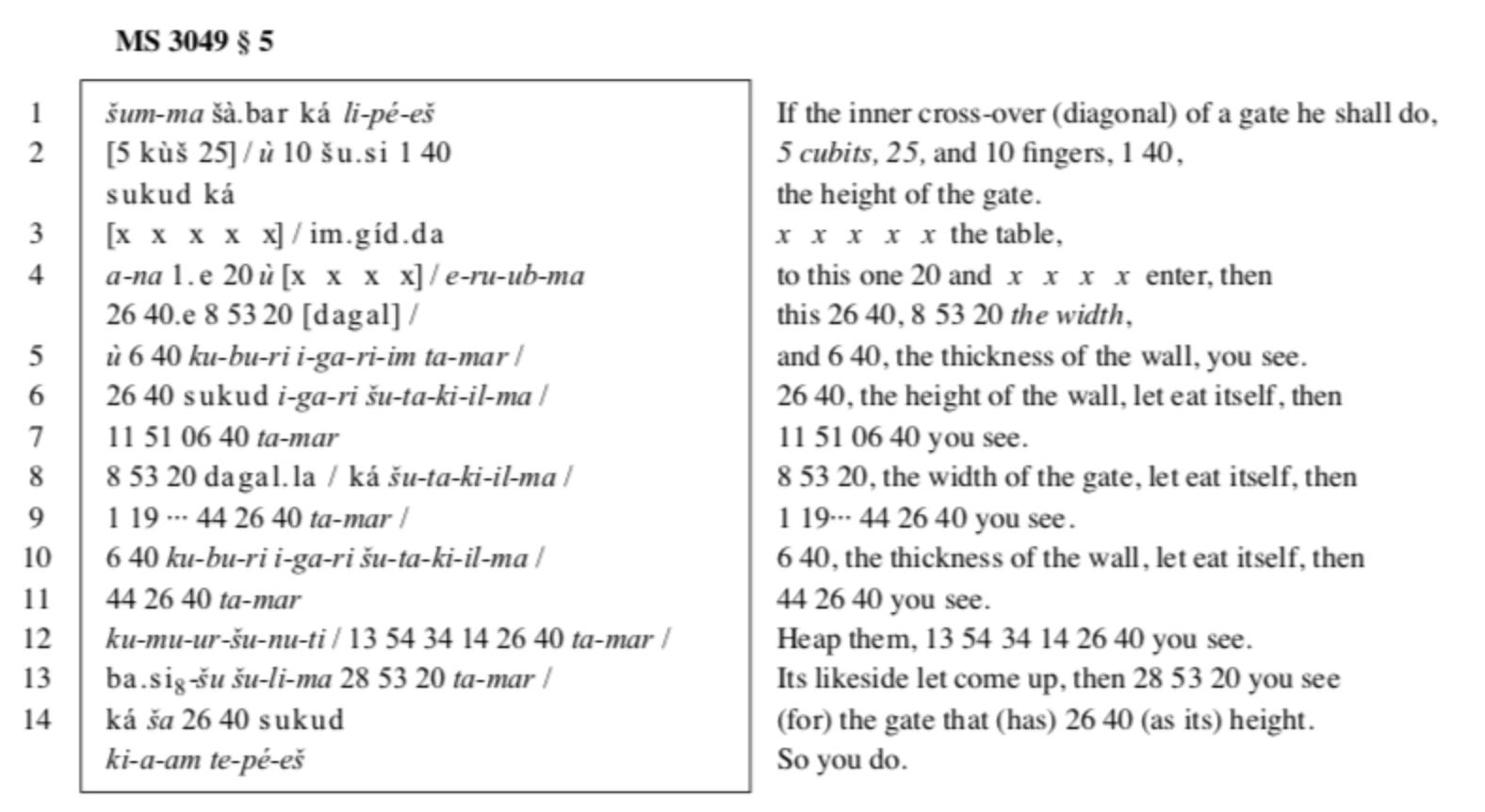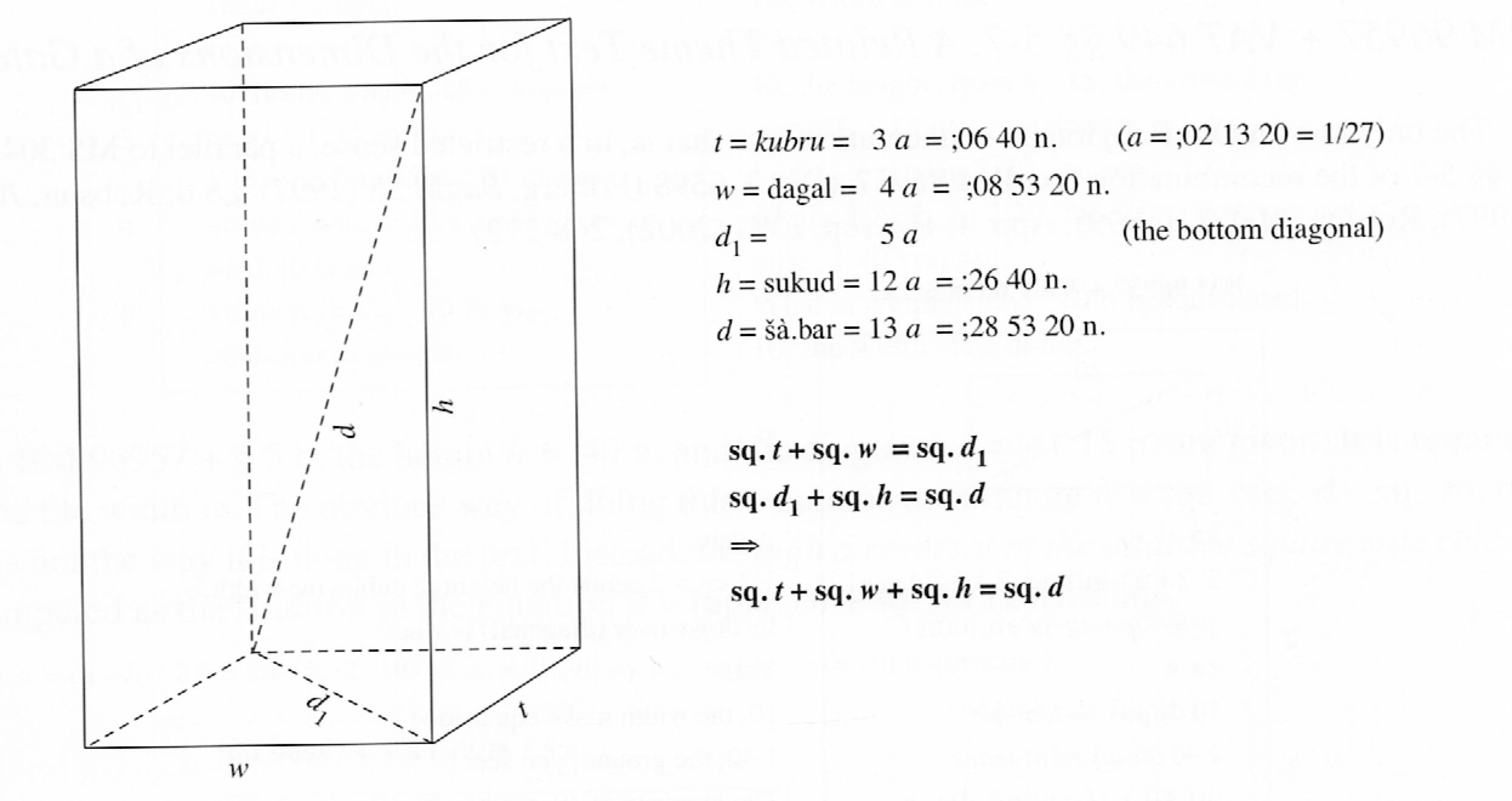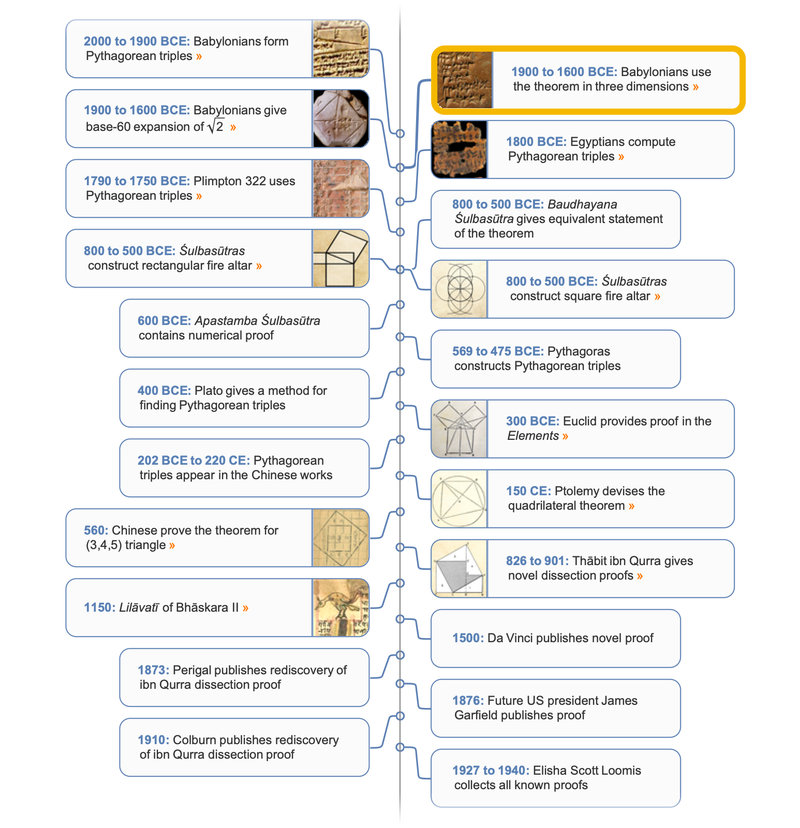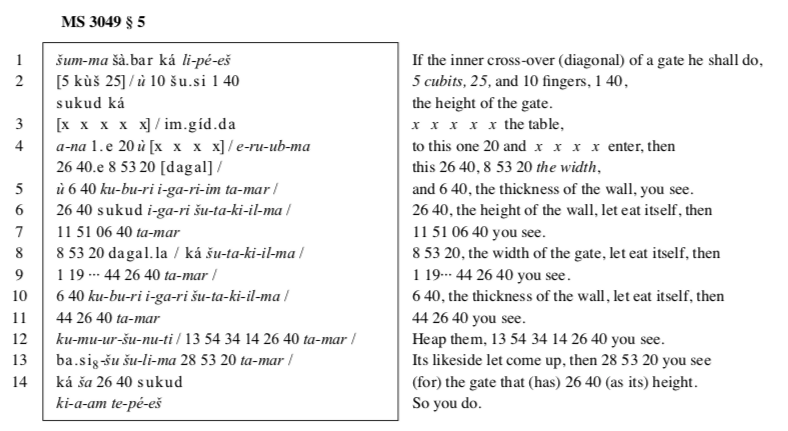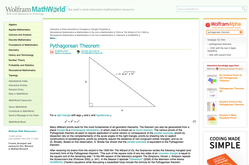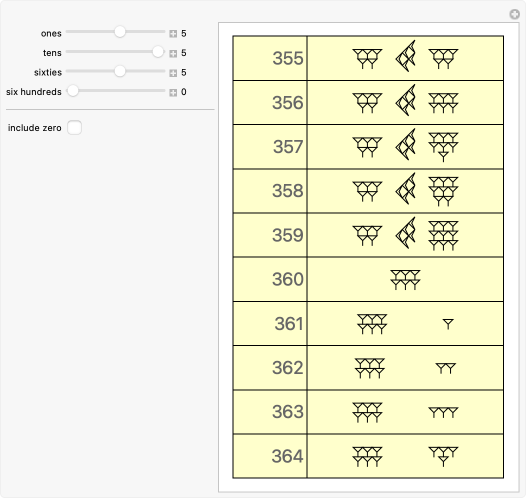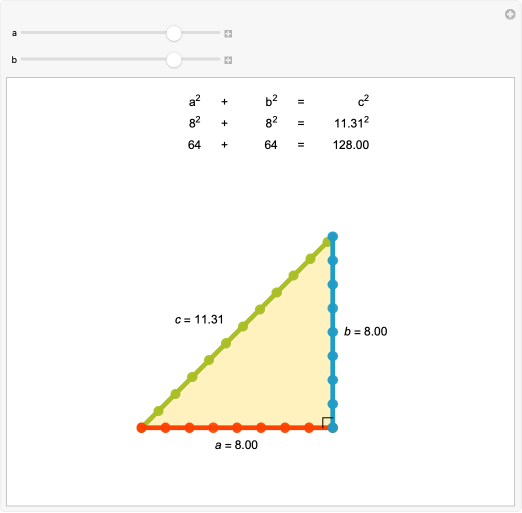around 1900–1600 BCE
Babylonian Inner Diagonal Tablet
The Pythagorean theorem in three dimensions
This Babylonian cuneiform tablet fragment, dated to around 1900–1600 BCE, consists of the upper-left quarter of a full tablet. The presence of a detailed summary of its contents on the surviving portion indicates it originally contained 16 different geometric exercises concerning circles, diagonals, chords and a city gate.

One of the most interesting of the tablet's surviving problems concerns finding the "inner diagonal" drawn from the inner-left bottom corner to the outer-right top corner of a cuboid. This involves finding a solution in integers to the three-dimensional generalization of the Pythagorean theorem more than a millennium before Pythagoras lived.
